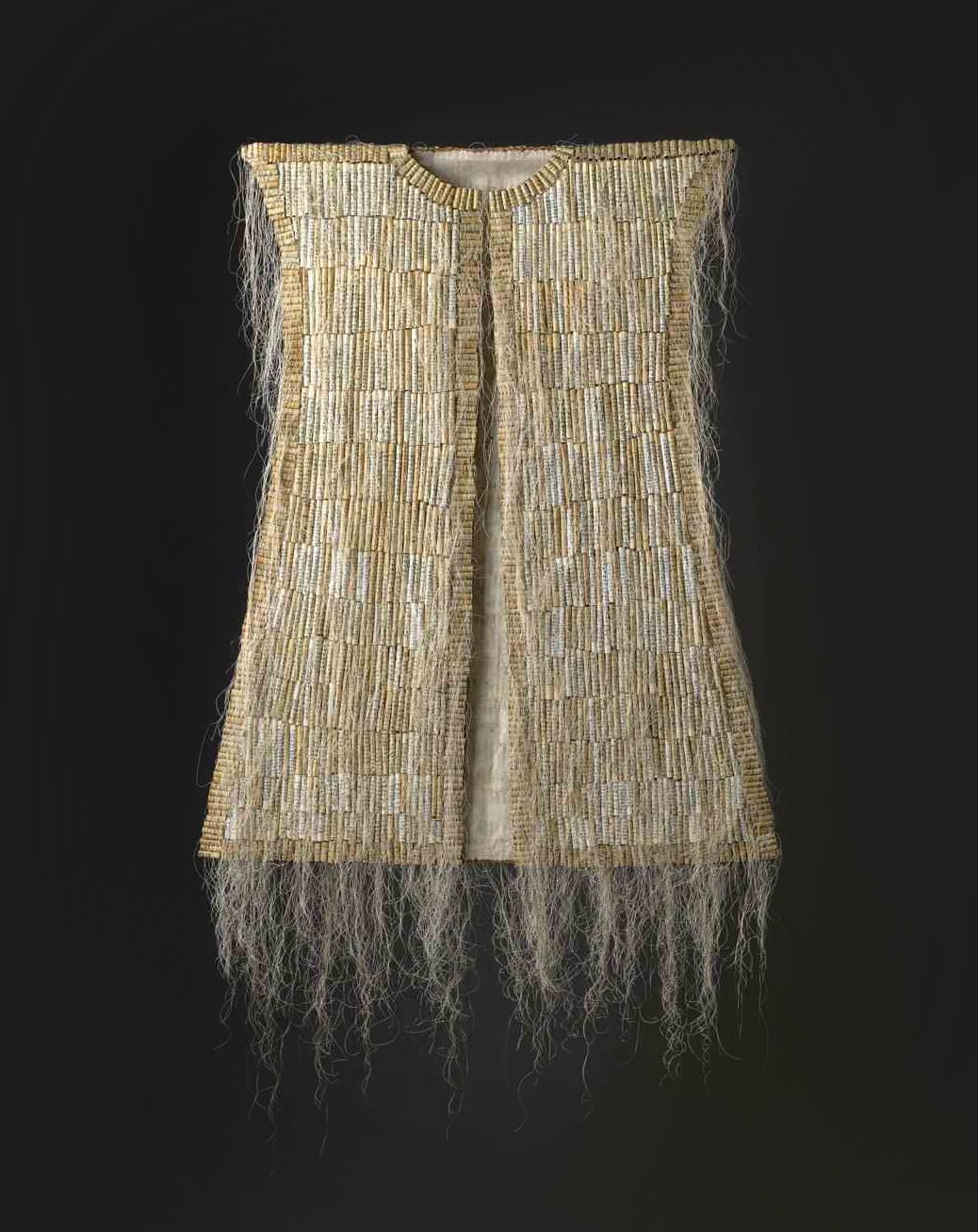Andi Arnovitz on SAPIR’s Culture Issue
Dear SAPIR Editors:
I opened this issue of SAPIR on culture with great anticipation. I have learned from and enjoy so much your past issues, and I am encouraged by your constant examination of contemporary life as seen through a Jewish lens.
Thus, my deep disappointment when I realized that you had covered literature, cinema, food, television, and theater marvelously. You featured a critically important article about the challenges and current role of museums, but a hearty discussion of Jewish visual art was utterly absent. As an artist who has dedicated my life to creating art which explores Jewish content, I was, well… just so frustrated.

“Vest of Prayers,” Andi Arnovitz
It’s bad enough that most contemporary U.S. Jewish museums are afraid of hanging exhibitions that are deemed “too Jewish” (and you may add to that the additional liability of art originating in Israel.) This very vibrant and critical piece of Jewish cultural life needs a conversation about it now more than ever.
There are plenty of active, outstanding Jewish artists creating cutting edge works today. There are works out there exploring every topic you’ve ever written about. And very often a picture is literally worth a thousand words. Especially in this world of visual messaging and content.
The conversation can begin with everything that is exciting in the world of Jewish visual arts today. How does one explain the abundance of edgy, contemporary exhibitions in Jewish museums in Europe? Currently the Jewish Museum in Vienna is featuring an exhibition titled “100 Jews,100 Misunderstandings!” Beit Venezia, the home for Jewish Culture in Venice has funded groundbreaking works of art over the last few years: a reimagining of the 1609 Venetian Haggadah, a 62-page zine and accompanying exhibition delving deeply into climate change but with solid Jewish insights and a uniquely Jewish point of view. Just this week, Beit Venezia presented an artistic Megillat Esther that is a pack of funky, interactive playing cards. Jewish museums in Europe continue to create new exhibitions highlighting topics of sexuality, modesty, ritual practice and even disagreement—through a very Jewish lens. One may argue that it is because we are no longer there—that it is the kind of fascination with the (absent) Jews that Europe is so obsessed with these days—but even that is yet another article that needs writing!
The Krakow Jewish festival has expanded to include the visual arts and it has been highly successful, drawing bigger crowds each year and attracting a wide range of artists. The Jerusalem Biennale of Jewish Art is going to celebrate its tenth year and has worked endlessly to create a platform for contemporary art with Jewish content, imagining textural based themes but inviting artists from all over the world to take part in this conversation. The NY-based Jewish Arts Salon was founded in 2009 and is a global network for Jewish visual artists. It has over 400 members and over 2,000 participants.
We now have an entire body of feminist art that is a brand new chapter in the history of Jewish Art. The groundbreaking exhibition “Matronita” curated by Dvora Liss and Dr. David Sperber at the Museum of Art in Ein Harod in 2012 brought together, for the first time ever, works by women artists in the religious world. And yet when the curators tried to get other Jewish museums abroad interested in taking the exhibition on the road, they could find no takers. Why? Why is finding funding for so many of the above-mentioned projects and festivals so difficult? These are the initial questions that beg exploration and are the impetus for future articles—maybe even an issue!
Why does “Tikkun Olam” seem to be the running theme of choice among many contemporary Jewish museums when it is the least specific? Why are we not addressing the elephant in the room of antisemitism? Wouldn’t visual art be the most accessible way of exploring this painfully current phenomenon? Ask any curator of (ritual) Judaica in any of the major Jewish museums if their budgets have expanded over the last few years, and I am pretty sure most will say they get a smaller piece of the budgetary pie, despite the many brilliant silversmiths and artists creating cutting edge Judaica. The alarming fact is that if Jewish museums do not collect these pieces, there are very few other institutions or individuals who will. Why are there more shows about dead Jewish artists than living ones? A quick search for the last contemporary ritual object competition in a major museum reveals that it has been a decade or more. And do we even care? Why do we somehow relegate art which celebrates Judaism as being further down the relevance ladder than art which criticizes?
There is a renaissance of artists’ books with Jewish themes and the major libraries of universities collect these, along with the Library of Congress, yet the average person knows nothing about this rich art form. There is a burgeoning world of graphic novels by and about Jews. Ken Krimstein’s graphic novel The Three Escapes of Hannah Arendt has been translated into six languages and is being sold around the world. We have a rich history of artists responding to political events that continues until today. There is an emerging body of work about queerness within Judaism. All of this is an integral part of the conversation and questions we need to ask about culture.
There is much to explore and write about. Let’s hope this was just an oversight and there is more to come.
